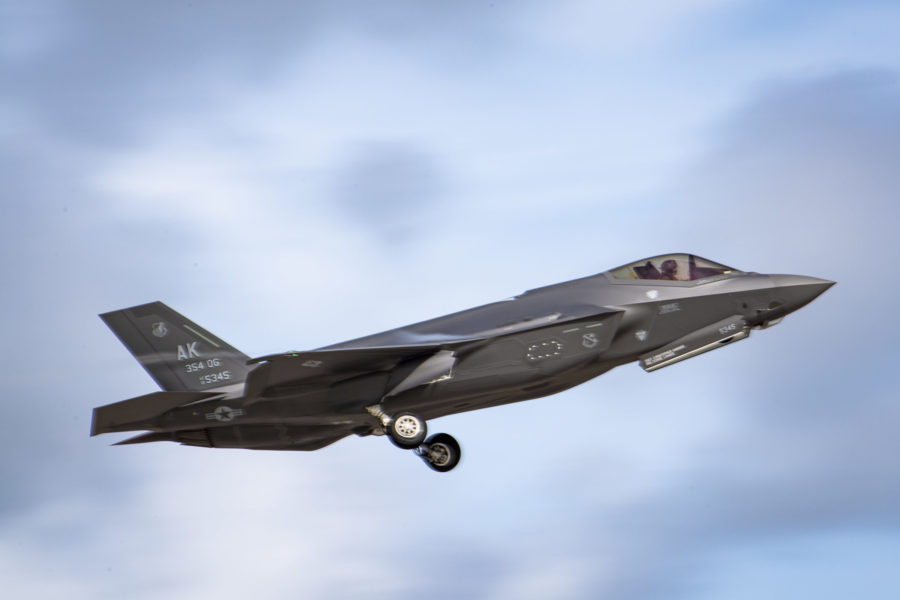Air Combat Command boss Gen. Mark D. Kelly isn’t confident that F-35 operating costs will be tamed to $25,000 per hour by 2025, which is the service’s goal. He’s also concerned China will field advanced fighter technologies like those in the Air Force’s developmental Next-Generation Air Dominance system before the U.S. does.
“I’m not brimming with confidence” that the $25K by ’25 goal will be met, Kelly said of the F-35. “I haven’t lost confidence,” he told reporters in a press conference during AFA’s virtual Aerospace Warfare Symposium, and that’s why he’s about to hit the road to visit operating locations, the depot, and other facilities, to “have conversations” about how the goal can be reached. The idea is not to “talk about how we feel” but get to a “plan of action and milestones” to achieve the $25K target.
“But as I sit here today, I’m not overly confident we’ll get there,” Kelly said.
Sustainment officials with Lockheed Martin, maker of the F-35, told reporters Feb. 23 they believe they can reach the goal under a new Performance-Based Logistics proposal, which the Air Force is evaluating. The F-35 Joint Program Office rejected an earlier version of the PBL pitch, which company officials had previously said was the only way they’d hit the cost per flying hour target. The target is expressed in 2012 base-year dollars.
Kelly also said he’s concerned the nation won’t have the “courage” to field a new fighter based on NGAD technologies before America’s “pacing threat” adversary, China, starts deploying one.
“I for one am confident … that the [NGAD] technology will get fielded,” and that adversaries who come up against it will “suffer a very tough day, and a tough week and a tough war,” he said.
“What I don’t know … is if our nation will have the courage and the focus to field this capability before someone like the Chinese fields it and uses it against us,” he said. There’s a “keen focus” on NGAD technology, and “we just need to make sure we keep our narrative up and articulate the biggest benefit we’ve had as a nation to have leading-edge technology ensuring we have air superiority,” because the nation’s joint military forces “are designed” to operate with control of the air. “It’s less designed to operate it without it,” he added.
Kelly raised the issue of NGAD himself at the end of the press conference, expressing surprise that no one had asked him about it. At AFA’s virtual Air, Space and Cyber conference, former USAF acquisition chief Will Roper revealed that an NGAD prototype has already flown, but no further details of the program have since been revealed. The new aircraft is sometimes described as a “6th generation” fighter, designed to be fielded rapidly, serve only a handful of years, and then be replaced by the next iteration of technology, under Roper’s construct.
Asked about Air Force Chief of Staff Gen. Charles Q. Brown Jr.’s revelation of a new tactical aviation study, Kelly said it’s important to think of it as a “clean sheet” analysis, and that less-capable aircraft that may be looked at would fulfill less-taxing missions.
Alert missions to defend the national airspace, or in parts of the world where air defenses are light, “don’t require a 5th- or 6th-gen capability,” Kelly said. And to apply a high-end fighter to those missions requires “a significant jump in investment as well as cost per flying hour,” he said. The study will prove a 10-15 year “lens” about what is really needed, he said.
Kelly echoed Brown’s comments about the service not having lost confidence in the F-35 , saying it will serve the nation “a lot of years,” as well as in partner nations’ air forces.
“We need to make sure that calculus of the capability [and] capacity of our F-35 fleet goes into the TacAir study,” as to “what’s going to round out the rest of our stable,” Kelly said.
